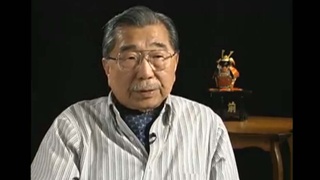Interviews
Differences in discrimination
The only time we got discrimination is when we went to medical school, cause…of course you know, medical school discriminated against women. But I think because I was oriental in Chicago, where they never saw an Oriental, I think I was sort of a curio to them, you know. They wondered what I was like. And when I went to Chicago, there was no discriminationing – in restaurants or anywhere…nightclubs or…like it was here in Los Angeles, you know. We were completely discriminated against, many places. We’d go to a restaurant and they wouldn’t wait on us. But when I went to Chicago, I was at first a little reluctant about going to those places, but I was accepted and so then I got used to going to those nightclubs and restaurants and so on.
Date: March 31, 2005
Location: California, US
Interviewer: Gwenn M. Jensen
Contributed by: Watase Media Arts Center, Japanese American National Museum
Explore More Videos

Questioning Curfew
(1918-2012) Fought the constitutionality of Executive Order 9066.

Challenges of finding a summer job
Judge, only Japanese American to serve on CWRIC.



Discrimination for Nisei doctors
(1928–2016) Daughter of an Issei doctor

Working at the family flower shop, meeting Greta Garbo
(1916-2016) Florist


Facing discrimination in America (Japanese)
(b. 1936) Shin-issei welding business owner

Being Denied as a Japanese American Lawyer
(b. 1934) The First Japanese American Appointed to the U.S. Court of Appeals.


Discrimination faced in San Francisco (Japanese)
(b. 1937) A war bride from Yokohama

Accepted by Japanese society as I learned more Japanese (Japanese)
(b. 1979) Sansei Nikkei Brazilian who lives in Oizumi-machi in Gunma prefecture. He runs his own design studio.

My daughter couldn’t fit in Japan, so I decided to go back to America (Japanese)
(b. 1936) Shin-issei welding business owner


Being Confused about Racial Identity in Postwar United States
(b. 1932) Nisei American stage, film, and TV actress
